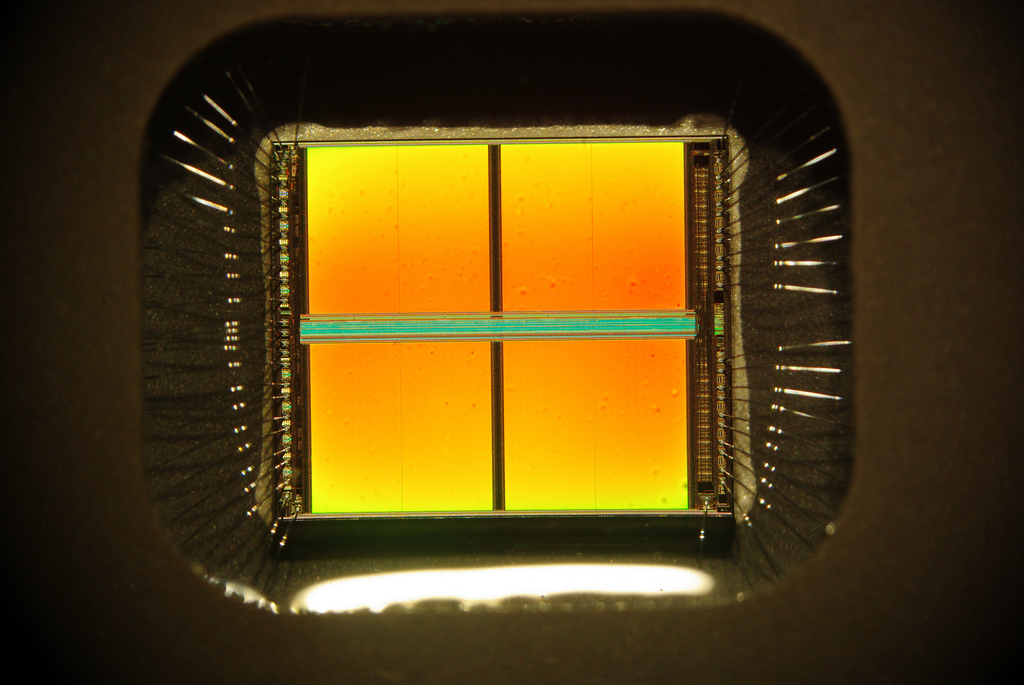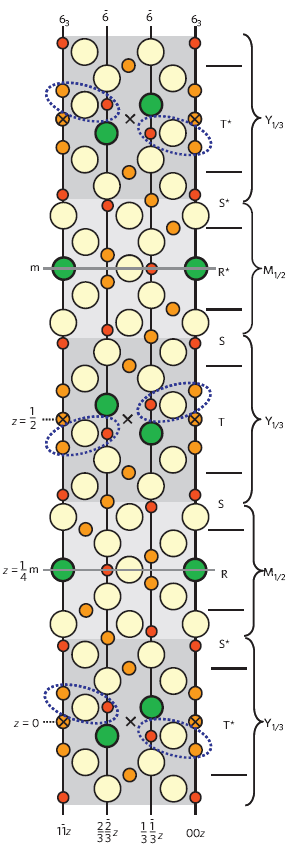Fridge magnets, and related magnets used in homes and offices, are made from the ceramic BaFe12O19, whose annual commercial production reaches 830,000 tons a year. Contrary to what their mundane use suggests, the physics of these magnets is rather unusual. They belong to a rare class of materials whose magnetism can be controlled with electric voltages and vice versa, which offers a new way of controlling magnetic fields in applications such as information storage (other than putting notes up on your fridge!).
Unfortunately, in most of these ceramics such effects are confined to low temperatures and have been mainly of interest to physicists only. Tsuyoshi Kimura and colleagues from Osaka University may now have changed this. They have discovered that in a close relative of fridge magnets, Sr3Co2Fe24O41, coupled interactions between magnetic and electric properties occur even at room temperature. “This demonstrates that such magnets can be used for other practical usages,” says Kimura. Their work is published online this week in Nature Materials.

A computer memory chip. Could multiferroics be used for information storage applications? Photo by yellowcloud via flickr.
Why is this important for computer memory? Well, computers haven’t suddenly gone forgetful and in need of sticking notes on a fridge. But the data on your computer’s hard drive is stored in tiny magnetic regions. The stability of magnetic signals ensures that the data is stored safely for the duration of the hard drive. At the same time, the use of magnetic signals means a complex architecture for the hard drive the read/write heads.
On the other hand, the architecture of a computer’s memory is much more simple, using only electronic effects, which also means the data in the computer memory is lost once the computer is shut down. A computer’s memory needs to be refreshed when the computer is started, leading to lengthy boot up times.
Therefore, researchers are working on a number of strategies to make computer chips that keep their memory. This is where these so-called multiferroics such as Sr3Co2Fe24O41 could come in. Multiferroics are a rare class of materials that show magnetism as well as ferroelectricity. The latter is an effect where positive and negative ions in a crystal are shifted with respect to each other. That separation of positive and negative charges creates an electric field in the material, a so-called permanent electric polarization. The name multiferroics arises from the fact that these compounds show more than on ‘ferroic’ order: ferromagnetism and ferroelectricity.

A schematic of the complex crystal structure of Sr3Co2Fe24O41, which shows multiferroic coupling at room-temperature. (c) 2010 Nature Publishing Group
Importantly, in a multiferroic both properties are coupled. That means its magnetic properties can be controlled with electric fields and vice versa. For example an electric field can be used to permanently store magnetic information and similarly read it out through the electric properties of the material. The problem is that there are so few known multiferroic compounds — particularly for operation at room temperature.
An exception is the widely studied room-temperature multiferroic BiFeO3. But in BiFeO3 magnetism and ferroelectricity merely co-exist. “The cross-coupling effects between magnetism and ferroelectricity in BiFeO3 are impractically subtle,” comments Sang-Wook Cheong, a physicist from Rutgers University working on multiferroics.
A much stronger coupling exists for the so-called magnetically-induced multiferroics, as was discovered seven years ago in the group of Yoshinori Tokura, a physicist from the University of Tokyo. Tsuyoshi Kimura was part of that team.
In these magnetically-induced multiferroics a helical arrangement of the atomic magnets in the crystal lattice directly causes ferroelectricity. Ferroelectricity only exists because of the magnetism. This makes the multiferroic coupling very strong. However, because it is so difficult stabilizing helical magnetic structures, most of these new multiferroics only work at low temperatures and show much smaller ferroelectric polarization than for example BiFeO3.
This is why Kimura’s finding of a room-temperature magnetically-induced multiferroic with a strong coupling is so relevant. “This discovery brings these fascinating multiferroics closer to real technological applications,” says Cheong. “It means that we can utilize the most studied cheap magnets as potential room-temperature multiferroics,” adds Tokura.
However, before this discovery can translate into concrete applications, a number of problems need to be overcome. So far, what Kimura and colleagues have demonstrated is the control of electric polarization with a magnetic field. What is missing is the reverse process. “For most technological devices, controlling magnetism by electric fields is more practical,” says Cheong.
Similarly, all these results have been obtained from studying larger pieces of the material. Making thin films from these magnets will be important agrees Kimura. “We definitely need thin film samples if we want to consider actual applications.” But this problem may not be insurmountable says Tokura. “I am quite optimistic that state-of-the-art oxide film growth technology can be successfully applied to this class of multiferroics.”
For now at least, it seems more likely that multiferroics will continue to be stuck on fridges than used inside computers. But with time, this might well change.
Reference:
Kitagawa, Y., Hiraoka, Y., Honda, T., Ishikura, T., Nakamura, H., & Kimura, T. (2010). Low-field magnetoelectric effect at room temperature Nature Materials DOI: 10.1038/nmat2826
Note: While I made every attempt to present these results in an ob jective manner, please be aware that I was the handling editor for this paper. For more details see the disclaimer.


Trackbacks/Pingbacks
[…] in studying the structure and magnetic properties of complex magnetic materials, superconductors, multiferroics, and many […]
[…] ferroelectricity and magnetism occur simultaneously. These are known as multiferroics, and I blogged about their potential applications before. In particular, the dipoles in a ferroelectrics can be switched by an electric field, which makes […]